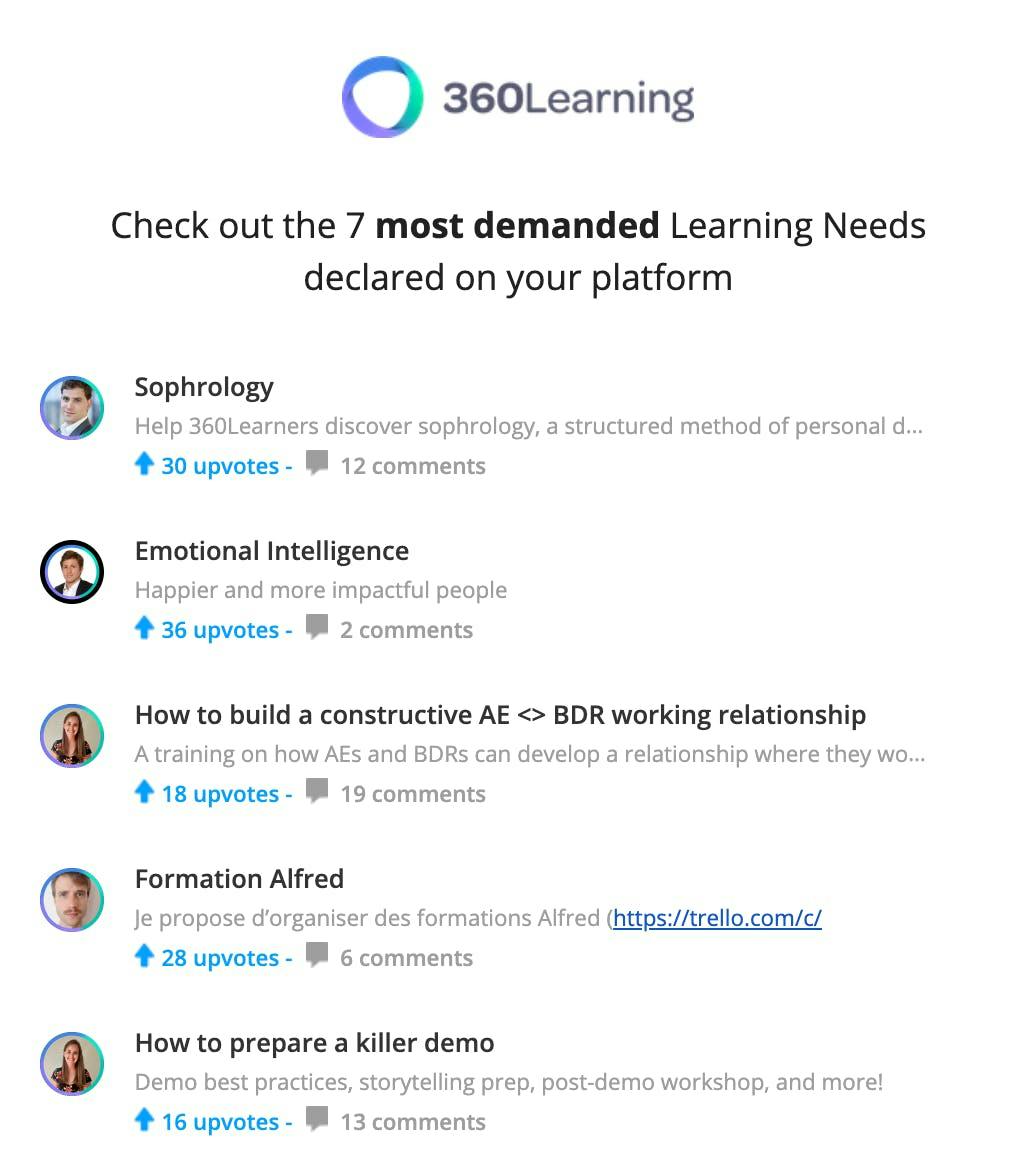First, the good news: L&D budgets are increasing.
According to LinkedIn’s 2020 Workplace Learning Report, 37% of L&D departments expect their budget to grow this year, and 57% intend to increase their funding for online learning. L&D leaders are finally getting the resources they need to build comprehensive employee training programs.
But with that money comes much higher expectations. L&D departments are feeling increasing pressure from the C-suite to deliver effective training programs with tangible ROI. Departments need to be more careful than ever about where they invest their hard-won money.
Unfortunately, some popular employee training methods sound great on paper or in sales pitches but fail to deliver on their promises. Look closely at each program and piece of technology to make sure that it will truly help employees learn.
This may ruffle a few feathers, but before you dust off the pitchforks, listen to what I have to say. Don’t pour your money into outdated or ineffective types of training just because they are popular or cost-effective. Instead, look for tools that cater to how employees want to learn: asynchronously, actively, and collaboratively.
The instructor-led training approach
Instructor-led training (ILT) is probably the most well-known form of in-person employee training. It’s a blanket term for any face-to-face training session where employees are gathered together in the same room for a lecture, seminar, or workshop. Virtual instructor-led training (VILT) simulates the classroom training experience online via webinars, Zoom workshops, and virtual classrooms on a dedicated VILT platform.
The emphasis on synchronized instructor-led training is a holdover from the days before online learning. In many ways, ILT resembles classical higher education: everyone is in a classroom together, learning from a skilled instructor. The familiarity makes it appealing to executives who may not be familiar with more advanced online learning solutions.
But just because it’s recognizable doesn’t mean it’s smart.
The biggest issue with ILT and VILT is that they’re not scalable. The more learners you add to your “class,” the less benefit you get from the potential interaction between instructor and student. It’s difficult for instructors to gauge student engagement from behind a screen, particularly with an audience of dozens or hundreds of people. As a result, most VILT courses devolve into a passive online lecture, which, studies show, is an ineffective way to learn.
We haven’t even touched on the logistical nightmare of coordinating real-time training for hundreds of people at the same time.
As more companies become wholly or partially remote, synchronized learning becomes nearly impossible when you consider varied work hours and obligations. You may have to run the same training half a dozen times to accommodate your employees’ schedules, and even then, it’s likely a few will miss it.
Instead, invest in asynchronous, on-the-job training solutions that let employees participate in training whenever it is most convenient. Employees across the company can take the same standardized training course without the logistical nightmare of getting them all in one physical or virtual room. It’s more comfortable, and studies show that employees prefer the flexibility of learning on their own schedule.
Asynchronous learning scales perfectly alongside your company. You can create useful employee training materials and use them over and over again for any learning program, including onboarding new employees or upskilling existing ones. It works as well with 50 people as it does with 5,000 or 50,000.
As more companies become wholly or partially remote, synchronized learning becomes nearly impossible when you consider varied work hours and obligations. You may have to run the same training half a dozen times to accommodate your employees’ schedules, and even then, it’s likely a few will miss it.
The “Netflix of Learning” approach
It’s easy to lose yourself for hours watching shows on Netflix.
Wouldn’t it be great if your employees felt the same way about your training program? That’s the rationale behind one of the biggest trends in corporate learning right now. Unfortunately, this isn’t an accurate reflection of how employees prefer to learn.
Learning experience platforms (LXPs) like Docebo and LinkedIn Learning offer slicker user interfaces than traditional learning management systems (LMS) by providing content on-demand and the promise that employees will love binge-watching training material. These platforms are self-service, with AI technology that prompts users to watch related course material and learners can consume content at their own pace. The hope is that instead of just ticking off required boxes, employees will stick around to browse and learn about related subjects.

Netflix has an excellent interface, it’s true, but that’s not why people watch Netflix. They tune in for the content: blockbuster movies and gripping TV shows. Unfortunately, no matter how effective and well-produced, no eLearning content is going to be as exciting and addictive as Breaking Bad or Mad Men.
Employees don’t approach eLearning the same way they approach Friday night on the couch. When they log in to their learning platform, they are likely looking for something specific: a tutorial, a skill upgrade, or some kind of concrete information. They want to learn what they need and then get back to work. Nobody is logging into their LXP just for fun.
Even worse, too much content can cause choice paralysis and cognitive overload. You know that feeling when you stare at Netflix for an hour trying to decide what to watch? Without clear guidance, employees can spend more time browsing around your LXP than learning. Or they might give up and do something else.
When it comes to employee training, you need something closer to social media than Netflix. A platform where employees don’t just passively view training materials—they help shape them. As a result, employees are more invested in training and are more likely to complete multiple courses.

It takes more than just a clever algorithm to create great learning experiences.
By providing your contact info, you agree to receive communications from 360Learning. You can opt-out at any time. For details, refer to our Privacy Policy.
Employees don’t approach eLearning the same way they approach Friday night on the couch. Nobody is logging into their LXP just for fun.

A collaborative learning platform brings everyone in the company into the learning process. Employees request courses, and other employees fulfill those needs. L&D runs quality control, collects feedback, and fine-tunes courses for more significant impact.
Instead of browsing, employees have clear guidance on what they should focus on. Managers create guided learning paths for their teams to learn new skills that they need to do their job efficiently. You can still take advantage of off-the-shelf content from products like LinkedIn Learning, but instead of a self-serve model, it’s curated into custom programs with specific goals.
Learning should be enjoyable, but that comes from the content and the context, not the interface. In this scenario, everyone at the company invests in creating quality, interactive content that engages employees and encourages a broader learning culture.
Learning should be enjoyable, but that comes from the content and the context, not the interface.
The blended learning approach
Blended learning, sometimes called hybrid learning, mixes in-person and online training programs.
It has long been a popular compromise for companies that want to dip their toes into eLearning but aren’t ready to give up on traditional in-person training. But current events and a larger movement toward remote work mean the blended learning paradigm is no longer a useful framework for organizing training.
Before COVID-19, economists predicted record growth for the blended learning market. Organizations love the “best of both worlds” idea of supplementing ILT with online courses. But then, well, the world turned upside down, and in-person learning is no longer safe or practical. Many companies are trending toward permanent or partial remote work, and that trend will only grow once the COVID-19 threat ends.
It’s just as well that in-person training is on its way out because we don’t need it anymore. Technology has evolved to the point where it’s even more effective than in-person training. Online learning solutions are more efficient, less expensive, and significantly easier to show training ROI.

COVID-19 has energized the movement toward collaborative online learning. With newly distributed workforces, quick communication, and a company culture of learning are more important than ever. An online collaborative learning program can help replicate the interactions that make in-person learning valuable without the logistical issues. Utilize discussion boards, real-time feedback, role-playing, simulations, and other features to help your employees learn remotely and asynchronously.
Blended learning as we once knew it is dead. In its place is a new type of blended learning, one that combines synchronous and asynchronous courses, both fueled by collaborative learning. Focus your efforts on this combination of online learning, and you won’t have to rework your training program when the next disaster hits.
Blended learning as we once knew it is dead. In its place is a new type of blended learning, one that combines synchronous and asynchronous courses, both fueled by collaborative learning.
How to choose an effective employee training method
To choose the best training methods for your organization, consider both your training goals and your company’s makeup. Is your workforce distributed (or likely to become distributed in the future)? How fast are you growing? What sort of digital disruption are you likely to face in the next decade? How prepared are you?
The most elaborate, expensive, and attractive learning system is doomed to fail if it doesn’t account for your organization and your employees' actual learning needs. You don’t need to spend tons of money on top-notch instructors or a fancy interface. Instead, look at how you can leverage institutional knowledge and team member collaboration to build content that’s optimized for a variety of learning styles on the subject matter your employees need to be successful.


